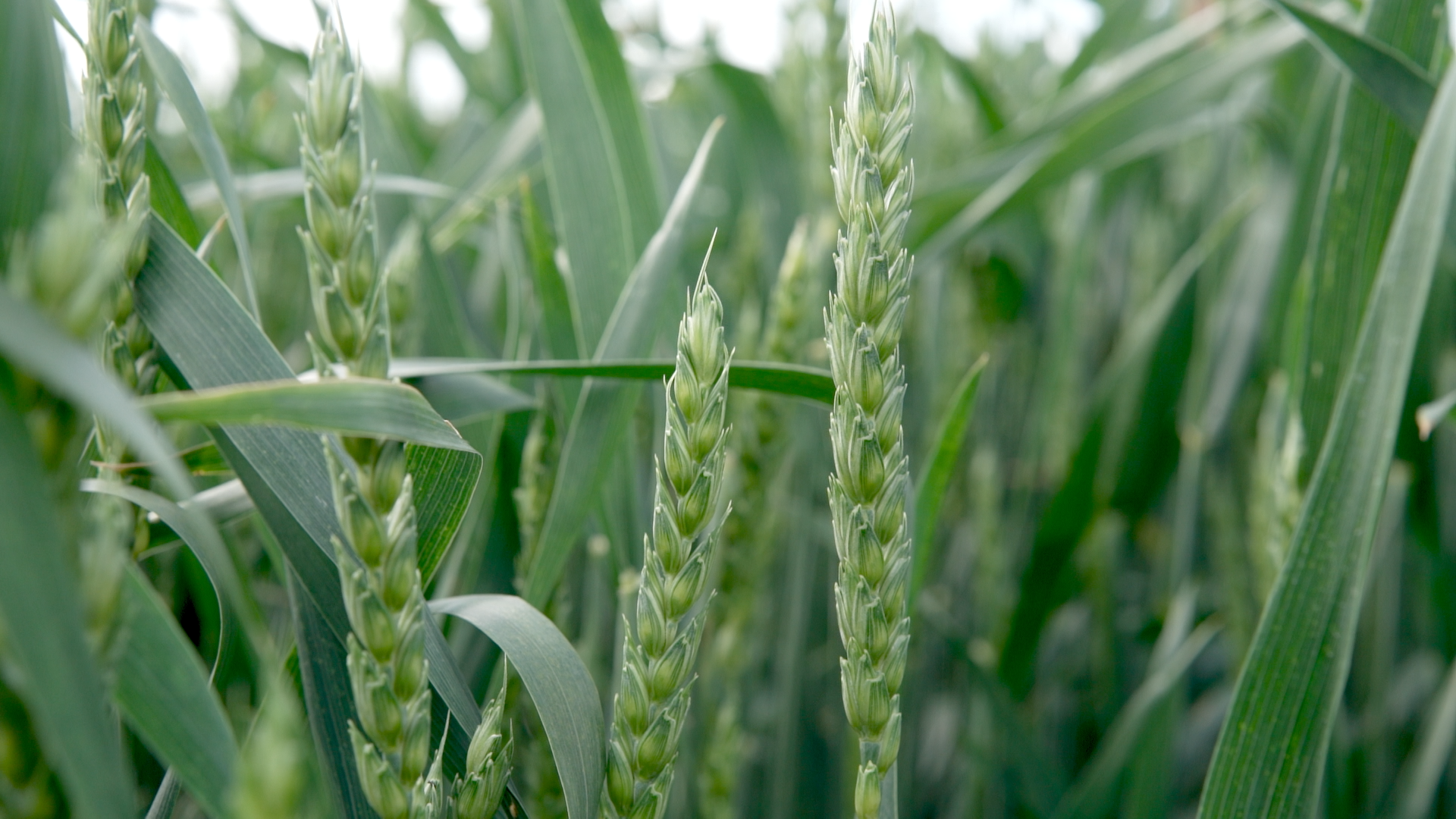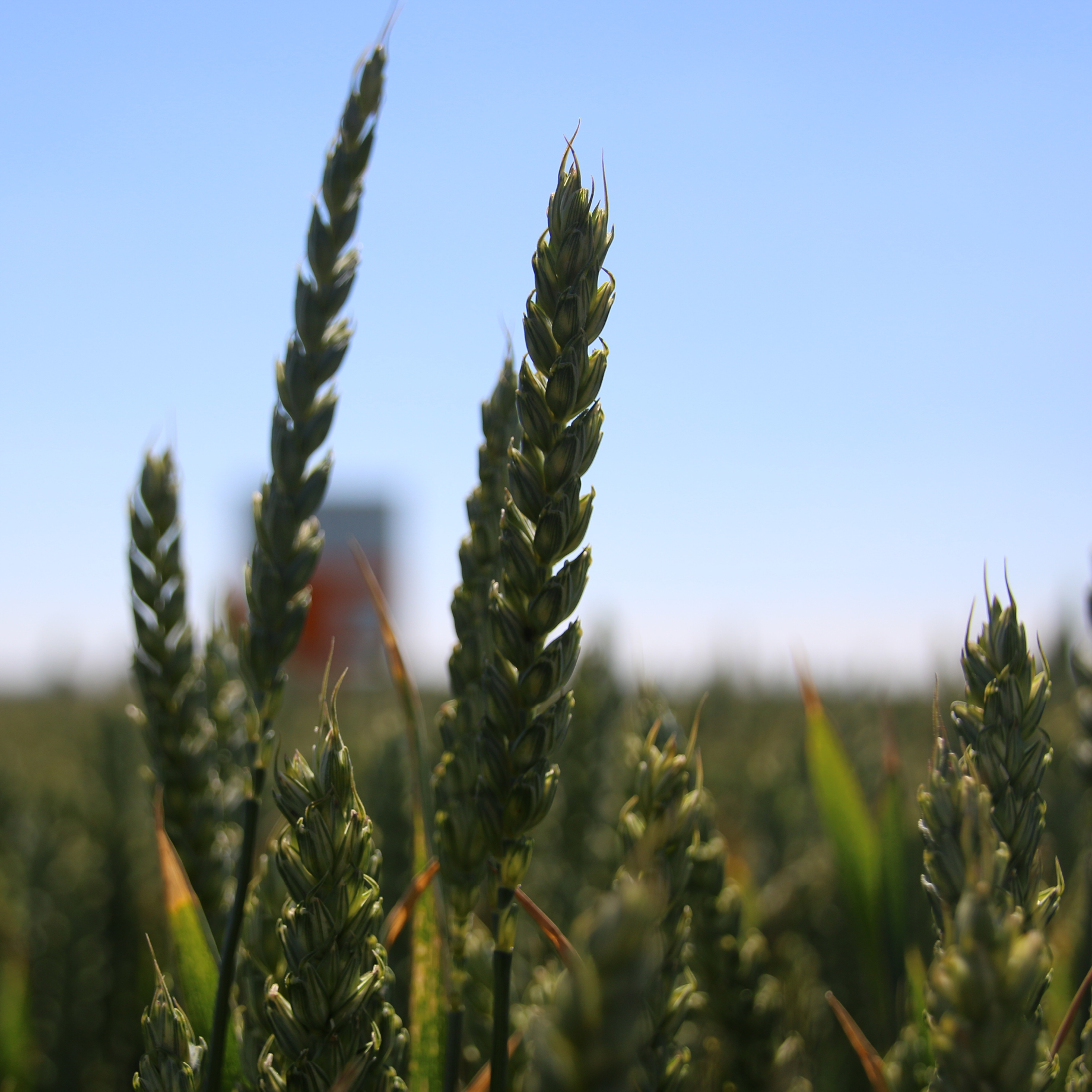Group 1 spring wheat, KWS Ladum, gives growers greater options
Introduced during a period of shortage in terms of new winter wheat Group 1s coming forward, KWS Ladum represents the first of a new generation of varieties in this sector, says the company’s Dr. Kirsty Richards.
A KWS Sywell x KWS Talland cross, this spring-sown full specification Group 1 milling wheat made its first appearance on the 2022/2023 Recommended List in November 2021, she explains.
“Fully approved by UK Flour Millers at the highest Group 1 quality standard, KWS Ladum is high yielding, rated a highly significant 8% above the current market-leading Group 1 spring wheat Mulika and 7% above the other 'new for 2022' UKFM Group 1 variety Nissaba when sown in the spring slot.
“KWS Ladum’s high yield is enhanced by its excellent physical grain quality and optimum milling specification.
“With good gluten content and loaf volume, the variety is characterised by its very high 324 Hagberg Falling Number (HFN), 78.0kg/hl specific weight and 13.2% protein content.
“KWS Ladum is also short, stiff-strawed and early to harvest (0), its 75cm straw height (without PGR) being the shortest of the three, by 2cm and 3cm respectively, making it easy to manage in the field.
The variety also performs well when sown in late autumn, benefitting from its excellent all-round disease package which includes an [8] for mildew, [7] for both brown rust and Septoria, plus 6 for yellow rust, she explains.
“Trials comparing spring versus winter sowing dates at KWS UK’s Eastern Region site at Fowlmere near Cambridge, highlighted KWS Ladum’s excellent yield performance and protein levels across a wide range of sowing dates from 22 October to 21 March.
“KWS Ladum takes Group 1 top-quality spring breadmaking wheats to the next level, so now could be a good time for growers who wish to widen and diversify their rotations to look at what is available in a sector they might not previously have considered.”
KWS UK is one of the few plant breeding companies with a dedicated spring wheat breeding programme to deliver products specifically for the UK farmer, she adds.
“Although nothing can touch a high-yielding winter wheat, spring sown spring wheat is back on the agenda for some UK growers due to the crop’s rotational benefits, significant developments in plant breeding and advances in yields, which combine to provide many more options.
“New spring wheat varieties are robust, flexible, and profitable, with yields and physical grain quality which match those of many late sown winter wheats.
“Growers are now looking to spring wheat to serve quality markets, help to extend and broaden rotations, to incorporate the use of cover crops, get soils into better condition, help to reduce weed burden, and simplify crop management.”
Although something of a ‘Cinderella’ crop in the past, spring wheat is becoming a viable option and can reduce the amount of working capital required, she believes.
“Requiring less inputs, it potentially offers an attractive alternative to winter and second wheats, which are becoming increasingly expensive to grow, not least because they require more agrochemical inputs and more Nitrogen, which are now much more costly and difficult to source.
“From a grower’s perspective, spring wheats can fit in quite well agronomically. They achieve relatively high levels of protein and require lower levels of inputs.
“Against a backdrop of increasing restrictions on the use of fertilisers, and price/availability issues, they may become an increasingly important consideration for growers, or with businesses seeking to differentiate themselves in terms of their carbon footprint.
“The KWS spring wheat portfolio includes varieties which provide faster establishment, leafier plants with fewer tillers, high vigour, better drought resistance, improved disease packages, improved lodging resistance, strong grain fill, improved yields and meet the requirements of different end markets.”
KWS UK is one of the few plant breeding companies with a dedicated spring wheat breeding programme to deliver products specifically for the UK farmer.
An exciting opportunity
In East Suffolk, P. C. Kindred & Son grew their first crop of KWS Ladum for the 2022 harvest at Crabbes Farm, Parham near Woodbridge.
Operated by Alys and Graham Thompson, the farm comprises 440 hectares of chalky boulder clay which supports a rotation comprising wheat, barley, perennial ryegrass, sugar beet and vining peas.
Cereals are grown either for seed or to feed a herd of 320 Large White/Landrace/Duroc cross breeding sows, Alys explains.
“When choosing commercial wheat varieties, we usually go for ‘barn fillers’ rather than the quality market.
“The key characteristics we look for are yield and increasingly disease resistance, with Septoria tritici now being our main disease concern following the loss of chlorothalonil.
“We are always looking for profitable crops to grow after later-lifted sugar beet, including spring wheat. In the past we have grown Mulika but KWS Ladum’s much higher yield and bread making quality made it an exciting option.”
The other important factor was KWS Ladum’s wide drilling window, she points out.
“When lifting sugar beet in late November or December on our clay soils it is important to have a wide sowing window so that we can aim to get it drilled straight after lifting, but if conditions do not allow that we can still sow in the spring.
“We drilled the 17ha of KWS Ladum across two fields immediately after sugar beet had been lifted on 21 November using a power harrow drill combination straight onto ploughed land and a seed rate of 185kg/ha.
“The crop established quickly, its roots developed well over the winter, and it raced through the growth stages in the spring, quickly catching up to the earlier sown varieties.
“It looked even, clean, and robust throughout the season and overall appears to be a solid variety, with good disease resistance and excellent quality.
“The prolonged drought of 2022, which lasted throughout the spring and summer, was exacerbated by record temperatures, but despite this the KWS Ladum showed no visible signs of stress at any time during the season.”
The crop received a total of 188kg/ha of Nitrogen, in four splits of Ammonium Nitrate (AN) and Nitrogen Sulphur (N+S) products, together with a basic fungicide programme comprising Toledo® (Rotam) and Folpet (Adama) at the T0 timing, Tebucur® (Globachem) and CCC at T1, then Librax® (BASF) and Comet® (BASF) at T2.
KWS Ladum was the last wheat harvested Crabbes Farm, the two fields yielding 9.6 t/ha and 9.8 t/ha when combined on 4 August, Alys adds.
“Winter wheat yields in 2022 were down 7% on the five-year average, suggesting that all crops had their yield potential reduced, although the lack of moisture was much less of an issue on the heavy land at Crabbes Farm than on nearby light land which suffered badly.
“Overall, KWS Ladum proved itself as variety with good disease resistance, drought tolerance and the management advantages of a flexible sowing window.”
The miller's perspective
KWS Ladum adds significant yield potential in the spring wheat sector and its overall specification performs well for millers, says KWS’ Kirsty Richards.
“The Recommended List highlights that, after more than three years of trials, the UK Flour Millers rated this variety a Group 1 milling and breadmaking spring wheat.
“It accumulated consistently high protein levels in the growing season, which led to excellent quality gluten and high-volume loaves.
“Baking performance was found to be excellent thanks to the high extensibility of the gluten, making KWS Ladum a really flexible product for bakers to use across a range of processes.”
Joe Brennan, technical manager for UK Flour Millers, which represents the UK flour milling industry. says supporting its members to maintain sustainable supplies of flour is a key objective for the future.
“For the milling industry, the addition of two new Group 1 spring wheats to the 2022/23 RL is welcome, especially as the winter wheat Group 1 area is declining.
“These wheats are an excellent source of UK breadmaking protein, and both the new varieties have a stronger gluten than Mulika, which has been the sole Group 1 spring wheat for some years now.
“As Group 1 wheats, these new varieties show consistently good breadmaking quality and will achieve a premium at mills that use spring wheats. As always, it is crucial to understand the requirements of your local markets before drilling a new variety.”
Your consultants




